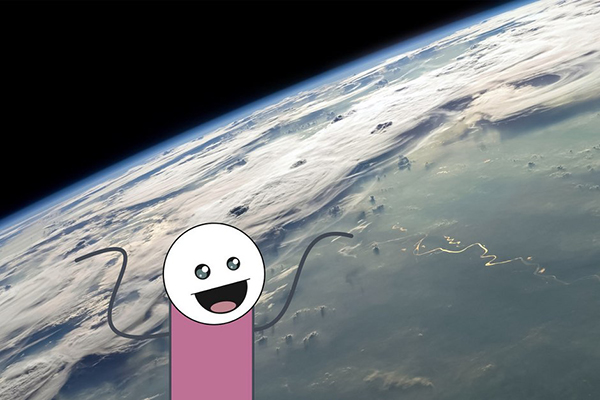HOT
 Production-Quality Lenses Directly from SLA 3D P…
Production-Quality Lenses Directly from SLA 3D P… Forging Ahead with Solar Energy and GibbsCAM CNC…
Forging Ahead with Solar Energy and GibbsCAM CNC… GibbsCAM Software Helps Race-Team Mechanics Beco…
GibbsCAM Software Helps Race-Team Mechanics Beco… Metro Aerospace Introduces 3D Printed Part for F…
Metro Aerospace Introduces 3D Printed Part for F… GibbsCAM Enables Rover Exploration Vehicle Parts…
GibbsCAM Enables Rover Exploration Vehicle Parts… Designing a Custom Boot for an Injured Penguin
Designing a Custom Boot for an Injured Penguin Asano Uses Geomagic 3D Scan Software to Drive In…
Asano Uses Geomagic 3D Scan Software to Drive In…
You haven't experienced VR until you've experienced Noitom’s game changing immersive technology.

In the 2015 sci-fi film Ex Machina, Nathan Bateman, CEO of tech giant Blue Book, asks computer programmer Caleb Smith to evaluate a humanoid robot named Ava, who is imbued with artificial intelligence. The twist is that this is a "full disclosure" Turing Test. As opposed to Turing's classic format - in which the subject of the test is hidden - Caleb must judge whether Ava possesses genuine consciousness, with the full knowledge that she is an artificial construct.
I felt much the same as Caleb when I visited Noitom late last month and experienced PROJECT ALICE for the first time. Headquartered in Beijing, Noitom is a Chinese company founded by Haoyang Liu and Tristan Dai in 2011 (the company's name is the word "motion" spelled backwards). In five years, Noitom's R&D has quickly expanded from motion capture to immersive VR applications in visual effects, gaming, sports, medical, military and business.
Tobias (Tobi) Baumann, Noitom's Director of Game Development, gave me a tour of the Beijing loft facility, which was buzzing with a flow of activity among the software and content development, hardware and prop engineering and business and marketing zones. We passed a cluster of custom VR camera rigs and a pile of VR controller prototypes (modular first-person-shooter gear) to watch a middle-aged Chinese seamstress stitch VR suits on a vintage sewing machine near a bank of 3D printers.
Tobi escorted me to an adjacent building housing a staging area for VR content partners and a demo room for PROJECT ALICE. PROJECT ALICE is a commercial B2B solution intended for VR entertainment zones and theme parks. The system distinguishes itself by tracking people and objects with an optical system, inertial mocap suits, motion gloves and head-mounted displays (HMDs) for an immersive virtual reality experience with tactile connection to the real world.
PROJECT ALICE can be experienced in configurations ranging from the full VR bodysuit to a simple HMD with controllers. Due to time constraints I took the latter route, donning an Oculus Rift CV1 alongside Tobi and his Noitom colleague, Bei Chuan, who guided us into the rabbit hole, our floating heads and controllers visible to one another.
Our first VR environment was a digital replica of the demo room, complete with the furnishings and other props, including a barstool. The value proposition of PROJECT ALICE is a multi-user environment with object tracking, which takes the immersive VR experience to the next level. The most compelling demonstration of this was when Bei Chuan handed me the barstool - in both actual and virtual reality. The weight and shape of the chair in my hand combined with the visualization of it in VR was mind-blowing.
We were able to generate a number of virtual objects from the tips of our VR controllers, including balloons (which I instinctively tried to blow) and bricks (which we piled up as fast as the system would allow). It was particularly trippy to stack digital objects atop the virtual representations of real objects.
A rolling fog effect (programmed by Tobi, complete with foghorn) transitioned us through a variety of virtual environments. We explored a darkened representation of the Noitom workshop in real time with virtual flashlights. We stood on the edge of the earth's atmosphere, the vastness of space grounded by the virtual presence of our demo room's circular rugs. We engaged in balloon target practice on an alien shore, and then smashed virtual rum bottles on the deck of a simulated pirate ship (a remarkable addictive activity, by the way). Our final destination was an automobile showroom where I deconstructed an engine and reassembled it in a snap (one of the few situations where destruction takes longer than construction) and then almost tumbled into a Buick after opening the door, leaning in, losing my balance and trying to catch myself on the virtual seat.
In short, PROJECT ALICE was my best VR experience to date: high fidelity, low latency, tactile and FUN. I was aware of being in VR the entire time but I also quickly took it for granted - much in the same way that we're aware of being in the world but also take it for granted. If there was any con to the pros, it's that I quickly had the expectation to be able to manipulate everything, and was mildly annoyed when I couldn't (much like my toddler daughter in daily life). I also found it somewhat hazardous to be in an environment where certain things (like the barstool) are mapped to physical objects, while other things (like the car seat) are not: you don't know what to watch out for and what to rely on. Of course, these limitations are temporary (and contingent upon engineering time), but they do speak to the issue of user agency, which is voracious.
PROJECT ALICE is not the end game, but it's certainly a game changer.




































